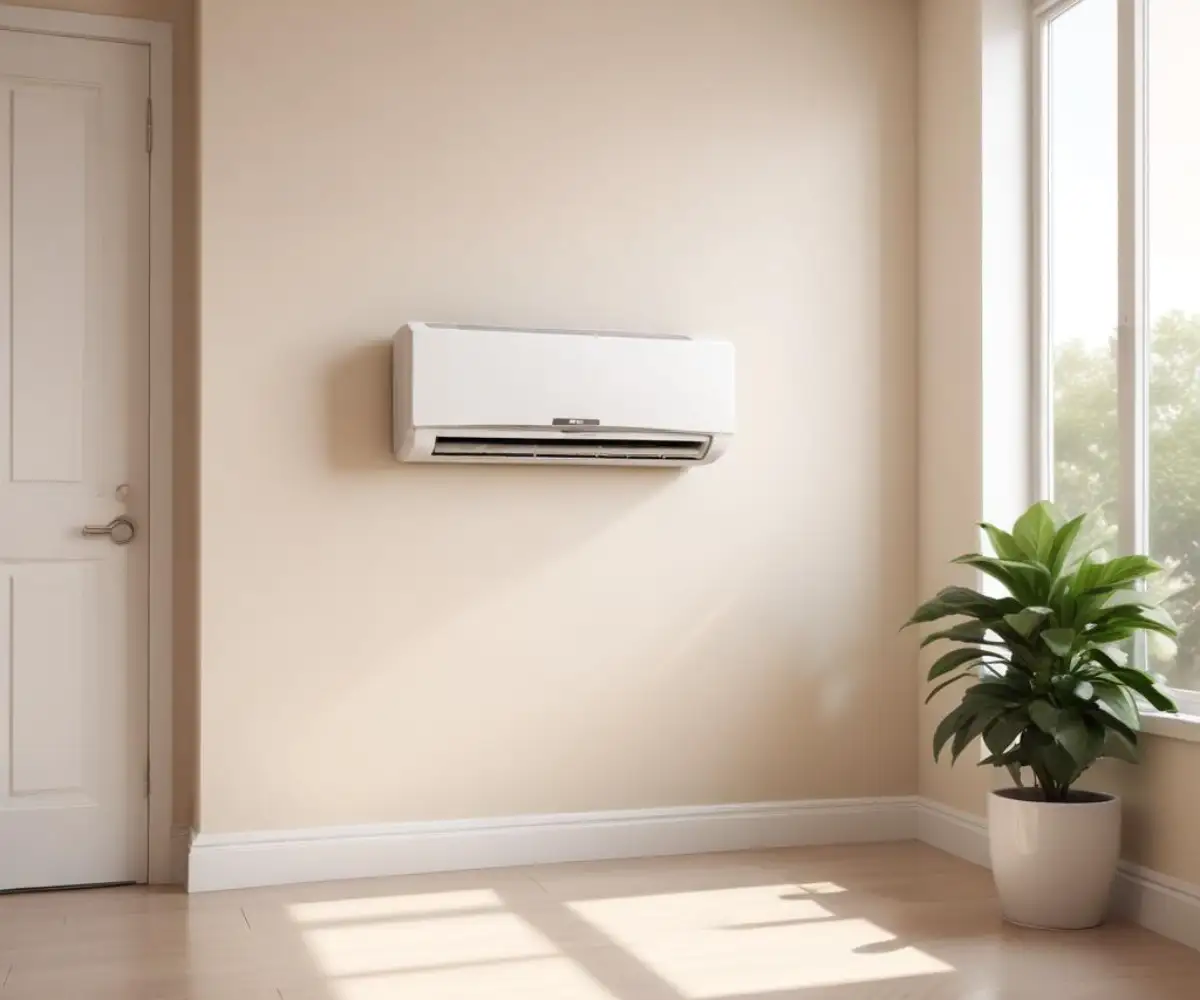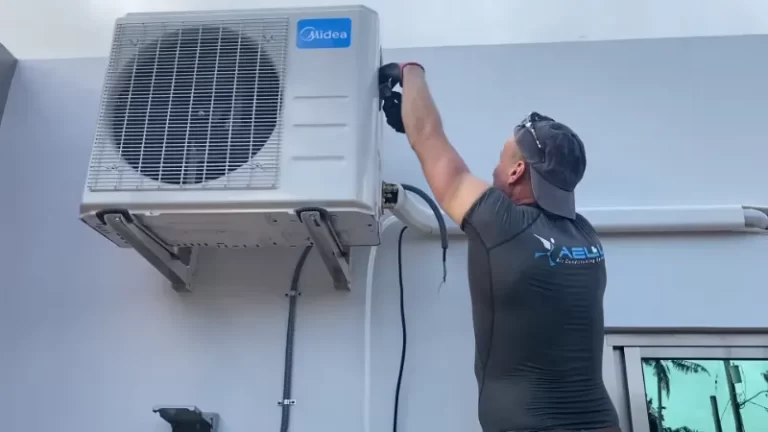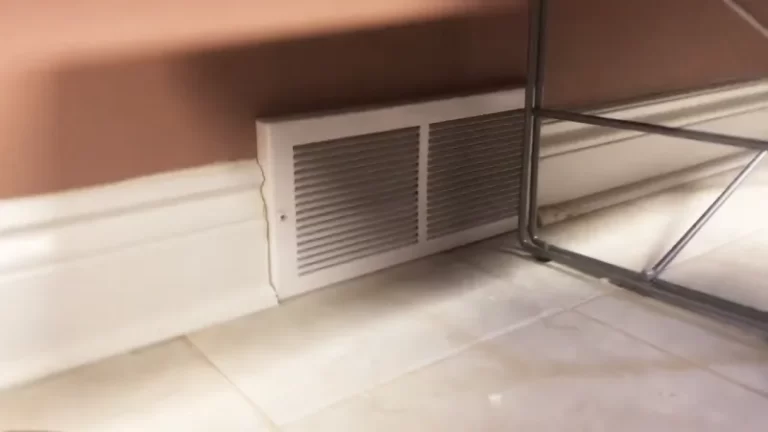Mini Split in Hallway: Your Home Comfort Dream or a Costly Mistake?
You have a problem. Your home has frustrating hot and cold spots, especially in the bedrooms, making a good night’s sleep feel impossible. A single, centrally located mini split in the hallway seems like a genius, budget-friendly solution to evenly heat and cool multiple rooms.
This idea is tempting because it promises to solve your comfort issues with a single indoor unit. However, the reality is often far more complex, and this seemingly clever placement can quickly turn into an inefficient and expensive mistake if not planned correctly.
You'll Learn About
Why a Hallway Installation Seems Like the Perfect Hack
The appeal of a hallway mini split is undeniable. Placing one unit in a central corridor feels logical for distributing conditioned air to several adjacent rooms. This approach suggests significant cost savings by reducing the need for multiple indoor heads, simplifying installation.
Aesthetically, keeping the unit out of the primary living areas or bedrooms is another major draw. It offers a cleaner look while seemingly providing whole-home comfort. But this popular idea often overlooks the fundamental physics of how air actually moves within a confined space.
The Hard Truth: Airflow Dynamics vs. Your Floor Plan
Ductless mini splits are designed to condition the specific room or zone they are placed in. While they are powerful, they are not magic. Simply “throwing” air down a hallway and hoping it turns perfectly into multiple rooms defies basic principles of thermodynamics and air pressure.
Cool air is dense and tends to fall, while warm air rises. A hallway unit will effectively cool or heat the hallway itself, but that conditioned air will struggle to penetrate deep into bedrooms. The unit’s thermostat is in the hallway, so it will satisfy the temperature setting there and shut off, long before the bedrooms reach a comfortable temperature. This process, known as short-cycling, leads to poor performance and wasted energy.
Will It Actually Condition Adjoining Rooms?
The effectiveness of a hallway unit is severely limited. While it might slightly lower the temperature in nearby rooms with open doors, it will not provide the consistent comfort you expect. You will likely end up with a very cold or hot hallway and bedrooms that are still uncomfortable.
Factors like the length of the hallway, the size of the doorways, and the overall layout of your home play a huge role. In most cases, the air from the unit loses momentum and mixes with unconditioned air before it can make a real difference in the target rooms.
A Strategic Approach: Hallway Mini Split Pros and Cons
While often not the ideal solution, a hallway installation isn’t an automatic failure if certain conditions are met and expectations are realistic. It can be a compromise for smaller homes with very short hallways and an open layout. Before committing, it’s critical to weigh the potential benefits against the significant drawbacks.
Understanding these trade-offs is essential. For many, the cons will highlight why a different approach, such as a multi-zone system, is a better long-term investment for true comfort and efficiency.
| Feature | Pros | Cons |
|---|---|---|
| Cost | Lower upfront cost with a single indoor unit. | High operational costs due to inefficiency and short-cycling. |
| Comfort | May take the “edge off” in rooms close to the unit. | Creates uneven temperatures; cold/hot hallway and uncomfortable rooms. |
| Air Distribution | Central location seems logical for coverage. | Poor airflow into rooms; air circulates back to the unit in the hall. |
| Aesthetics | Keeps the indoor unit out of main living spaces/bedrooms. | The unit is still visible in a high-traffic area. |
| Efficiency | Modern units are inherently efficient. | Inefficient operation when trying to condition multiple separate spaces. |
Best Practices for Hallway Placement
If you are set on a hallway installation, proper placement is non-negotiable. The indoor unit should be mounted high on the wall, which helps with the natural circulation of both cool and warm air. It’s crucial to ensure there is ample clearance around the unit, free from any obstructions that could block airflow.
Aim the unit’s louvers to direct air down the length of the hallway toward the bedroom doors, not at the opposite wall. This gives the conditioned air the best possible chance to travel toward the intended spaces. Consulting with an HVAC professional is vital to determine the optimal position.

Choosing the Right Mini Split Unit
Selecting the correct size and model is paramount. A common mistake is oversizing the unit, believing more power will solve the distribution problem. An oversized unit will short-cycle constantly, failing to dehumidify the air properly in the summer and leading to uncomfortable temperature swings and wasted electricity.
Look for a model with a powerful fan and excellent louver control to help direct the air more effectively. The features and build quality can vary significantly between brands, so it’s wise to compare options. For instance, exploring a comparison of popular brands like Blue Ridge and Mitsubishi can reveal differences in fan performance and technology that might influence your decision.
Unlocking Performance: Advanced Solutions for Hallway Units
To make a hallway unit truly effective, you must actively help move the air. Relying on the mini split alone is a recipe for disappointment. The most effective strategy is to create a pathway for the conditioned air to travel into the bedrooms and for the stale, unconditioned air to return to the unit.
A highly effective and often overlooked solution is the use of air transfer fans or jumper vents. These are small, quiet fans installed in the wall or over a doorway that pull the conditioned air from the hallway into the bedroom. This creates active circulation, forcing the system to work for the entire space rather than just the hallway.
Smarter Alternatives for Whole-Home Comfort
While a hallway unit can be made to work with some modifications, it is ultimately a compromise. For genuine, room-by-room comfort and maximum efficiency, superior alternatives exist that are designed for this exact purpose.
The gold standard is a multi-zone mini split system. This involves one outdoor condenser connected to multiple indoor air handlers. Each key room, such as a bedroom or living area, gets its own dedicated unit and thermostat, providing precise temperature control exactly where you need it. While the initial investment is higher, the long-term energy savings and superior comfort often make it the most cost-effective choice when you’re looking to replace a traditional central AC system.
Concealed Ducted Mini Splits: The Best of Both Worlds
For those who want the performance of a multi-zone system without the appearance of wall-mounted units, a concealed or “slim duct” mini split is an excellent option. These systems use a compact, hidden air handler in an attic or closet that connects to short duct runs and discreet ceiling or floor vents. This provides the efficiency of a mini split with the seamless look of central air.
The Final Verdict: Is a Hallway Mini Split Worth It?
Placing a mini split in a hallway is a gamble that rarely pays off as expected. It can provide a marginal improvement in very specific home layouts but often fails to deliver the even, reliable comfort homeowners are seeking. The result is typically an ice-cold hallway, lukewarm bedrooms, and an unexpectedly high energy bill.
Before you proceed, consider the long-term implications. For true comfort and efficiency, investing in a multi-zone system with dedicated units in each critical space is almost always the superior solution. It addresses the root problem of uneven temperatures directly, rather than relying on a workaround that is fundamentally flawed.
Frequently Asked Questions
Is it a good idea to install a mini split in a hallway?
Installing a mini split in a hallway can be a solution for some homes, but it has drawbacks. Hallways are often confined spaces, which can restrict airflow and lead to uneven temperature distribution. The conditioned air may struggle to reach the larger rooms where it’s most needed, reducing the system’s overall efficiency.
Can a single mini split in a hallway cool or heat my entire home?
A single mini split is generally not sufficient to cool or heat an entire house from a hallway, especially in larger or multi-story homes. While it might provide some level of comfort in the immediate vicinity, achieving consistent temperatures throughout all rooms is unlikely without multiple indoor units. Factors like the size of your home and its layout will significantly impact the effectiveness of a single hallway unit.
What are the main disadvantages of placing a mini split in a hallway?
The primary disadvantages include reduced efficiency and uneven temperatures. The narrow space can trap the conditioned air, preventing it from circulating effectively to other rooms. This can also create a drafty or uncomfortable feeling in the hallway itself, which is a transitional space where people don’t spend much time.
What are the benefits of a mini split system in general?
Mini split systems offer several advantages, including high energy efficiency due to the absence of ductwork, which can account for significant energy loss. They also provide zoned heating and cooling, allowing you to control the temperature in individual rooms independently. Additionally, they are known for their quiet operation and flexible installation options.
Are there better locations for a mini split than a hallway?
Yes, for optimal performance, it’s generally better to install a mini split in a larger, more open area like a living room or family room. This allows the air to circulate more freely and reach a larger portion of your home. Placing units in the rooms you use most often will provide more direct and efficient heating and cooling.
How many indoor units do I need for my home?
The number of indoor units you need depends on the size and layout of your house. For whole-home cooling and heating, you will likely need multiple indoor units, potentially one for each main room. A multi-zone system can connect several indoor units to a single outdoor unit, providing efficient temperature control throughout the home.


